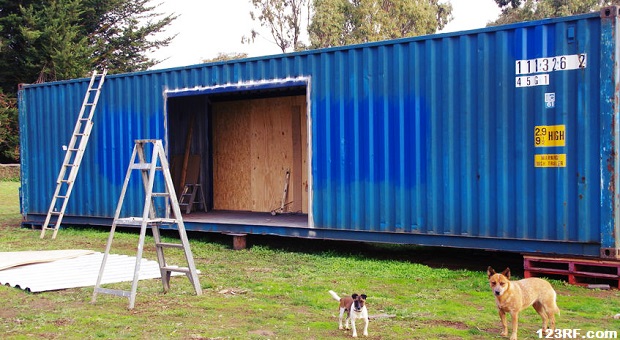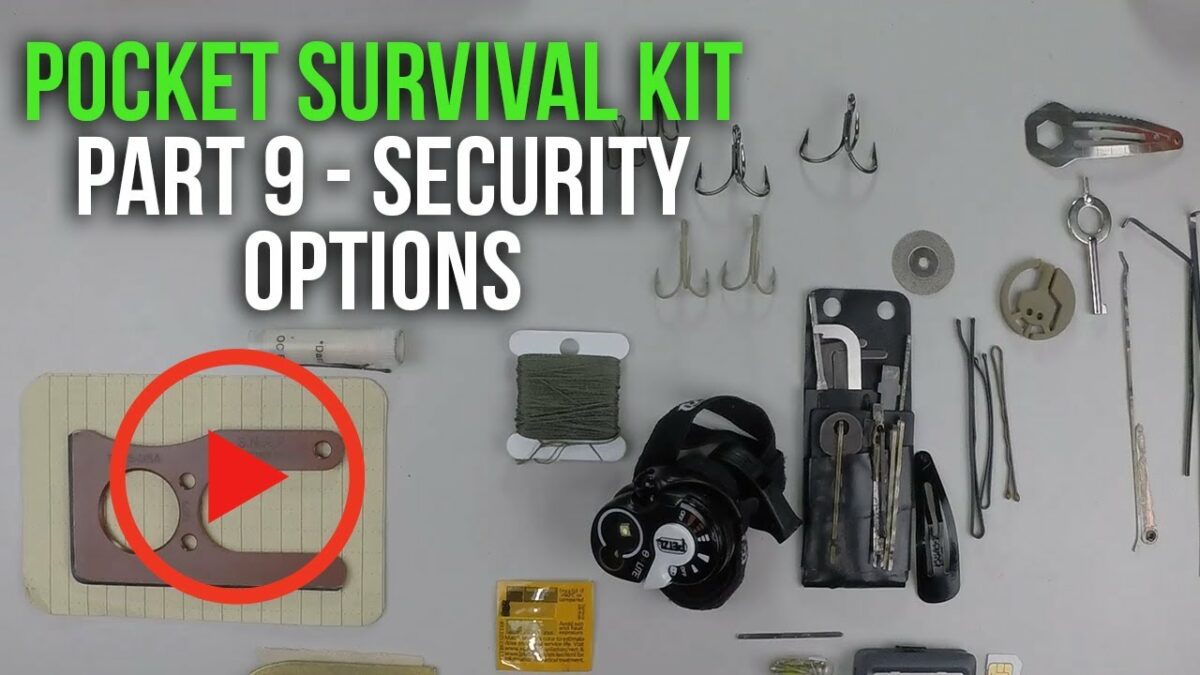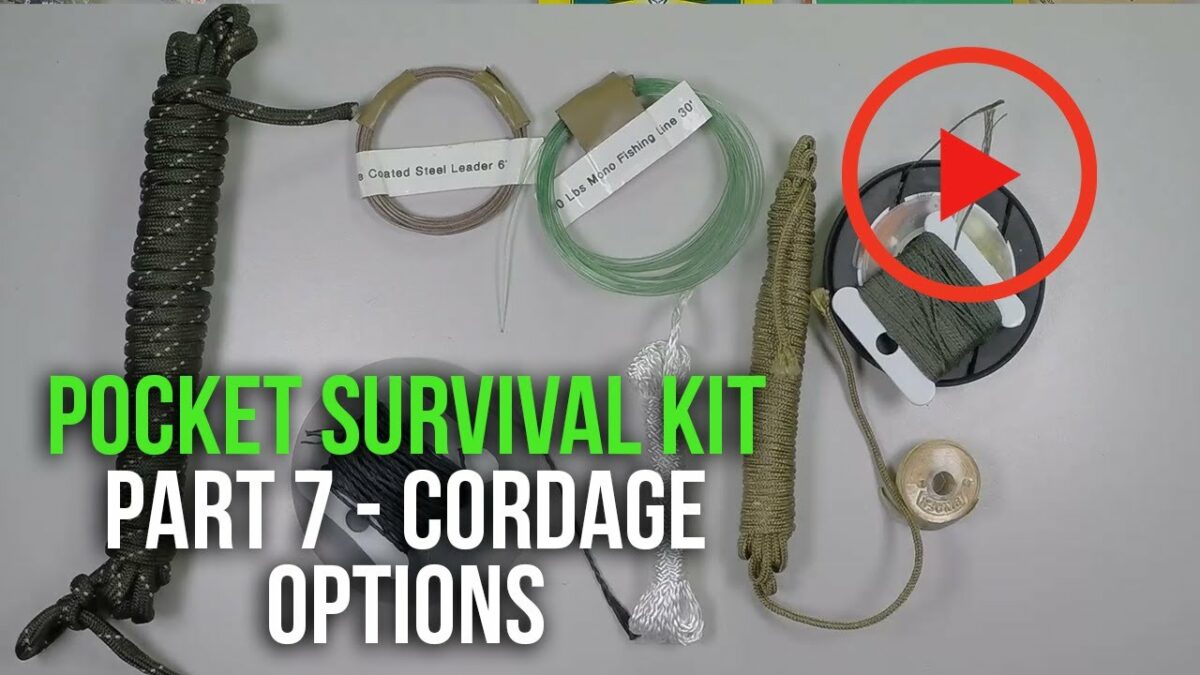As more and more people think about establishing a bug-out retreat, one of the most popular building styles that has emerged is building a container house.
While building a nice container house is a lot of work, used shipping containers actually make for very reasonably priced building material. Considering that they are already structurally sound, they are one of the cheapest possible ways of building any sort of small dwelling.
Underground or Above the Ground?
When we talk about container houses, we’re really talking about two totally separate types of buildings. The first is the above-ground home, which is made of any number of shipping containers forming the basic structure. The other is an underground bunker to hide away from everything that could seek to do you harm.
While shipping containers can be used for building underground bunkers, they are really ineffective for it. All of the strength of the shipping container is in the corners. You can stack them several high and the corners will support the weight of all the filled containers above it.
But the skin of the shipping container is actually rather weak. Backfilling dirt into the hole to bury the container will be enough to cause the container to collapse.
If you want to build an underground bunker or home, you’ll be much better off with cinder blocks or cement, than you can possibly be with a shipping container. However, that doesn’t mean that shipping containers aren’t a good choice for above-ground construction.
Building an above ground house or cabin out of shipping containers is probably much cheaper than just about any other base material you can find. The containers are structurally sound enough to provide a good cabin and can be connected together to form larger structures. Being stackable, there’s no reason why a house build out of shipping containers can’t be two, three or more stories high.
Of course stacking means stacking at the corners, where the strength is. If you want to stack them in any other way, you need to run I-beams from end to end, so that the lower container will support the upper level. Still, there’s nothing wrong with this and it’s really not all that expensive to do.
By stacking containers, it is easy to create the rough outlines of the house. They can be welded, bolted or pinned together, as well as being bolted to the foundation, in order to create a sturdy structure that isn’t likely to blow away.
How Easy Could It Be?
While both professional and amateur architects have made a wide variety of homes out of shipping containers, there are some design limitations that they pose. First of all, the size of the container itself poses limitations. They are only eight feet wide, and come in 20 or 40 foot lengths. So in most cases, the rooms are limited to being only eight feet wide as well.
Of course, this limitation can be solved by attaching two containers together or by building off from the side of a container with more traditional building materials. While it is more expensive to build in either of these ways, than just using the containers, it greatly expands the possible designs that can be built.
Modifying the containers themselves isn’t really all that hard. The soft steel sides cut fairly easily with a reciprocating saw for the installation of doors and windows. Some very nice designs have been created, in which whole wall sections are replaced with sliding-glass patio doors, leading out onto a deck. You are generally better off installing a door, than trying to use the container’s pre-existing doors.
Another problem area is that of insulation. Metal walls don’t provide anything in insulation value. Adding insulation on the outside of the walls eliminates all the benefit of using containers as building material.
On the other hand, adding insulation on the inside reduces the available width of the container. To deal with this, most people only insulate their containers slightly, making them ideal for temperate climates, but not as effective in more extreme weather.
The skin of the container isn’t as bullet-proof as some seem to think. While it is steel, that doesn’t mean that it can stop a sniper from shooting you. The thin steel walls will clearly stop a .22 long rifle bullet, but won’t do anything to stop a round from a hunting rifle.
Lower power pistols, such as .380 caliber and 9mm would probably be stopped by the metal walls, but higher power pistol bullets, such as .45 caliber and .38 magnum would probably punch right through.
With all this in mind, there are clearly some times when building with containers provides some excellent advantages. The key is developing a design that takes full advantage of the containers’ structure and benefits, while avoiding the weaknesses of the container as much as possible. If you can avoid those weaknesses, you can make yourself a very nice cabin in the woods, without spending a fortune in the process.
This article has been written by Bill White for Survivopedia.









David jones | June 16, 2014
|
I have built 3 bermed and earth-covered structures with shipping containers, and tested the steel sheet in the walls from cutouts with various rounds.
The walls of shipping containers work well as-is for retaining earth, they bow a little but hold just fine year after year (for both 20′ and 40′ containers). The roof will hold some earth, but not a lot, and is best reinforced or covered if you install the container up-side-up (if you install it up-side-down, with the floor up, you can use the very strong steel beams in the floor to support the weight of earth on the top). The wood in the floor is the biggest issue with up-side-up installation because even though it is treated hardwood it will eventually rot from the constant ground moisture.
The corrugated steel sheet metal in the walls of a container will stop standard handgun rounds reliably, up to .45 auto. Magnum revolver rounds (.357 and so on) will punch through, as will rifle rounds aside from .22 LR (i.e. .223 and up will all punch through).
There are a few reasons to berm the sides and cover the roof with earth: dirt is great for stopping bullets, regulating interior temperature, and when you insulate the outside of a container with sheet foam and then cover that with dirt it protects the insulation. Dirt is excellent for long term exposure to the elements (but it does move, so filling in settled or exposed areas from time to time is needed, but easy).
The biggest challenge I have found so far with bermed shipping container structures? Local building codes. Best to build them as a non-permanent (no cement, etc) storage structure…
ROY R. REYNOLDS | June 17, 2014
|
You give 20 and 40 foot dimensions for containers but there are 48 and 53 foot containers also. They will probably be a little more expensive than the 20 and 40 foot containers. Just for consideration.
Norbert | June 17, 2014
|
A friend purchased 2 shipping containers @ 40 ft each and about a foot apart and placed them on a cement pad, about 6 ft deep in the ground. He then built a used pipe cage around the units with wire fencing attached around the unit on the inside of the pipe cage, but attached to it with wires (the inside mesh was about 3 inches from the units). He then poured a concrete mix in stages, first between the two units (with two connecting doorways), with the center being filed only 2 ft at a stage. After initiating the cement fill process in the center, he then proceeded to fill the side areas the same (2 ft per level)… the outside walls were also sectioned to have 5 ft pillar placements for outside strength. Before he filled the top, he used floor Jacks and 2×10 timber to shore up the top, then poured a 4 inch layer of cement over the top, and after about 5 hours, poured another layer of about 4 inches, and repeated the process the following day for another 4 inches. There was no buckling of the walls and everything was tight and strong. after about a week of drying, he then back filled the area with both sewer pipes and rocks with the final 2 ft of good dirt. He topped it off with rolled grass turf, planted a number of bushes and other wild plants of the area and you could not tell it was there. He has had it in place since 1994 and no leaks and looks as good as the day he placed it. He uses some of the sewer pipes for cooling and heating the unit (like a radiator for a heater/air conditioner).
I like the fact that everything on the inside is on a Murphy bed type system… When not in use as a bedroom or dining area, it is a den or study area, etc. He has about 620 sq ft with 2 designated sleeping areas, one of which can accommodate 6 persons (8×10 +/-) and folds up into a Computer/Study/Gaming room. If I recall right, it cost him about $7,000 to set it up… and then about $1,500 to finish it on the inside (used a Travel Trailer for kitchen and bathroom parts, and added another toilet and urinal closet for high needs of relief).
With the newer computers… like the LCD TV/Monitor + HDMI Android Stick Computers… all the bulky energy hogs have been replaced… giving more room and less energy consumption. For heat and cold, I was told that he refitted his unit with the 12vDC thermoelectric peltier plates that he switches the polarity for supper and winter heat/cool via those external PVC Sewer pipe radiator units.
Samuel | June 18, 2014
|
Excellent info!!! Any chance of getting an email with some blueprints on it?
Van Crews | June 17, 2014
|
There should be a way to place some type put all together a place to stay and a place to prep your food and a way to produce your electricity. This is to do all in one setting and not a piece here and a piece there. Then this would be meaningful to so many family and getting everyone ready. I would like to say for me and my family thank you for all the words and items that you all pass along.
Ken | September 19, 2014
|
I’m working on a unit to fill this need as you read this
Dave M | June 19, 2014
|
Bob Vila did a show on using shipping containers as the base for a hurricane-resistant home. He used 2 containers, with approx. 15 feet between them. Both units mounted to concrete block foundation walls, with a conventional truss roof support over the whole arrangement, with the trusses supported by the containers, using conventional materials for the roof and the space between the containers. Guess it could be called a ‘hybrid’ container house. Finished size approx. 40′ x 30-ish.
Pingback:False Myths That Could Ruin Your Prepping Plans | The Prepper Dome | April 16, 2015
|
Pingback:False Myths That Could Ruin Your Prepping Plans | Survival skills, survival guns, survival guide | April 22, 2015
|
gisella | September 6, 2015
|
container house is a house idea alluring, naturally amicable and exceptionally suggested. goo[dot]gl/bWFDqI
ADAM AW | February 18, 2016
|
Shipping containers are a cheap and good way of temporary space solutions. Well maintained properly, they can last a good 10 years or more. Moreover, given their mobility, they are good for relocation at minimal costs and hassle. http://www.joycontainers.com used shipping containers for sale in Australia
ryk.dan | December 12, 2016
|
Looks as though no one has posted here in a while…
I am from Michigan. I am looking to build a container cabin. I am curious how well they will hold up in the snow? I understand insulation.
Pardon my ignorance, but how do the containers tie to each other? Are they welded or are there bolts. how are they waterproofed when stacking and adding a stair?
I enjoyed reading about the concrete coating on the outside, that will be a great idea for added security.
I am planning to use solar power as my main source of electricity and wood as my main source of heat. other than by crane, is there a way to stack them? and approximately how much does it cost to transport after purchasing the containers?
I apologize for all of the questions, but this is really exciting to me.
Have a blessed Holiday Season!
Veronica Al-Bassam | August 21, 2018
|
I just now discovered your site and I’m very impressed with your knowledge and experience. I live in East TN and I have been trying to figure out the best way to go for my area. Earthship, Tiny Home, Shipping Container….. I am a single female that is about to turn 65 and I’m not afraid to get my hands dirty. Thank you so much for sharing your experience with us!
Sincerely, Veronica Al-Bassam
Alex | August 22, 2018
|
Thank you for reading our articles, Veronica! We are glad that you’re here and hope you’ll find a lot of useful stuff!
Alex, from Survivopedia!
Alex Bowman | November 27, 2020
|
Thank you for this information. I’ve been looking at shipping container homes for a while now. I like the idea of doing a DIY, but I’m not the handy type of person. I’ve been wanting something that I can take off-grid and be completely self-efficient. I came across simpleterra.com and I like the units they have. They don’t provide solar but I’ve been told it would be easy to incorporate with their units. My plan with whatever company I go with for the unit is to add a composting toilet and a grey-water system.